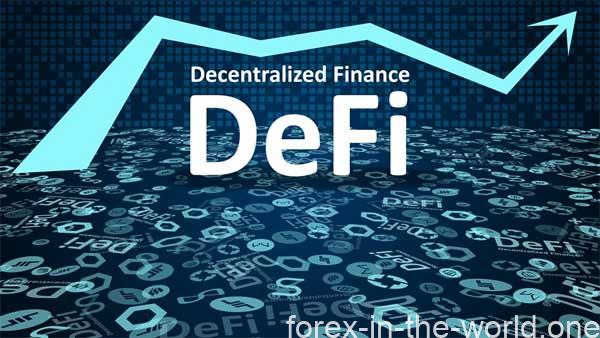In the fast-paced world of finance, disruptive technologies are changing the way we perceive, create, and increase wealth. Among these innovations, Non-Fungible Tokens (NFTs) and Decentralized Finance (DeFi) are leading a revolution that is redefining asset ownership and financial services. This article delves into the heart of the NFT craze, unpacks the intricacies of DeFi, and explores the burgeoning ecosystem of digital wealth-building trends. It’s a landscape where art meets technology, traditional banking systems are challenged, and investment strategies evolve at breakneck speeds.
Unveiling the NFT Craze: A Deep Dive

Non-Fungible Tokens have taken the digital world by storm, becoming a cultural and economic phenomenon. At their core, NFTs are unique digital assets verified using blockchain technology, which means they cannot be replicated or substituted. This uniqueness has driven their appeal in:
- Digital art and collectibles
- Virtual real estate
- Ownership records for physical assets
As digital artists and creators find new ways to monetize their work, NFTs have emerged as powerful tools for asserting digital ownership and scarcity. Collectors and investors alike are flocking to marketplaces to buy, sell, and trade these assets, propelling the NFT market to unprecedented heights. Despite concerns over market volatility and environmental impact, the NFT craze persists as it rewrites the rules of digital ownership and creativity.
DeFi Explained: Finance Redefined

Decentralized Finance, or DeFi, is a system where financial products become available on a public decentralized blockchain network, making them open to anyone to use, rather than going through middlemen like banks or brokerages. DeFi platforms offer several key advantages:
- Elimination of intermediaries
- Reduction in transaction fees
- Inclusivity and open access
By leveraging smart contracts on blockchain networks like Ethereum, DeFi applications enable users to lend, borrow, and trade assets without the need for traditional financial institutions. The transparency and security of blockchain underpin these applications, providing a trustless environment for users to interact with. As DeFi platforms grow, they challenge the centralized financial system, offering alternative solutions for savings, loans, and trading.
The Rise of Digital Wealth Builders

The advent of blockchain technology has given rise to a new class of investors and entrepreneurs: digital wealth builders. These individuals and groups are characterized by their:
- Savvy understanding of blockchain ecosystems
- Use of digital assets to generate passive income
- Active participation in the governance of DeFi platforms
Digital wealth builders are not confined to traditional investment portfolios—instead, they often seek opportunities in the burgeoning cryptosphere, including NFTs and DeFi projects. Their investment decisions are informed by a deep understanding of the underlying technology and a willingness to embrace the risks associated with these digital assets.
Tokenization: Asset Ownership Evolves

Tokenization is the process of converting rights to an asset into a digital token on a blockchain. This innovation is transforming asset ownership in several ways:
- Enhancing liquidity of traditionally illiquid assets like real estate
- Simplifying the transfer and division of ownership
- Increasing transparency in the provenance of assets
By tokenizing real-world assets, individuals can buy and sell fractions of ownership, broadening access to investment opportunities that were once the preserve of the wealthy. From art and real estate to intellectual property and commodities, tokenization is democratizing investment and redefining what it means to own an asset.
Yield Farming: Earning with DeFi

Within the DeFi ecosystem, yield farming has emerged as a popular method for cryptocurrency holders to generate returns on their investments. Yield farming involves:
- Staking or lending crypto assets to receive rewards
- Moving assets between different DeFi protocols for optimal returns
- Taking on more complex strategies involving multiple transactions
The returns from yield farming can be substantial, but they come with high risks, including market volatility, impermanent loss, and smart contract vulnerabilities. Nevertheless, for those with the expertise to navigate these challenges, yield farming remains an attractive avenue for digital wealth accumulation.
Beyond Hype: NFTs & DeFi Futures

The excitement surrounding NFTs and DeFi is often accompanied by speculation and hype. However, beyond the noise, these technologies hold the potential for profound long-term impact:
- NFTs could redefine intellectual property rights and digital content distribution
- DeFi may offer alternative financial systems for unbanked populations
- Both sectors could drive innovation in asset management and investment
As the space matures, it will be critical to address issues such as regulatory compliance, scalability, and user education. The future of NFTs and DeFi is not without challenges, but with continued innovation and responsible growth, they could become cornerstones of the new digital economy.
Comparison Table: NFTs vs. DeFi
| Feature | NFTs | DeFi |
|---|---|---|
| Asset Type | Unique, non-interchangeable | Fungible, interchangeable |
| Use Cases | Art, collectibles, IP | Lending, trading, staking |
| Market Access | Typically through auctions and specialized marketplaces | Accessible through various decentralized applications |
| Ownership | Represents ownership of a specific item or asset | Represents a stake or share in a protocol or platform |
| Value | Based on rarity, provenance, and market demand | Based on supply, demand, and underlying asset performance |
| Regulation | Emerging, with significant gray areas | More established, with efforts to integrate into traditional financial regulations |
In a world where technology continues to blur the lines between the tangible and the digital, NFTs and DeFi stand at the forefront of the digital wealth-building revolution. These trends are not just ephemeral fads but signal a shift towards a more inclusive and decentralized financial future. As these technologies evolve, so too will the strategies and mechanisms for generating, owning, and transferring wealth. The onus is now on investors, regulators, and the community at large to navigate this new frontier with diligence and foresight, ensuring that the promise of digital wealth is realized responsibly and equitably.




